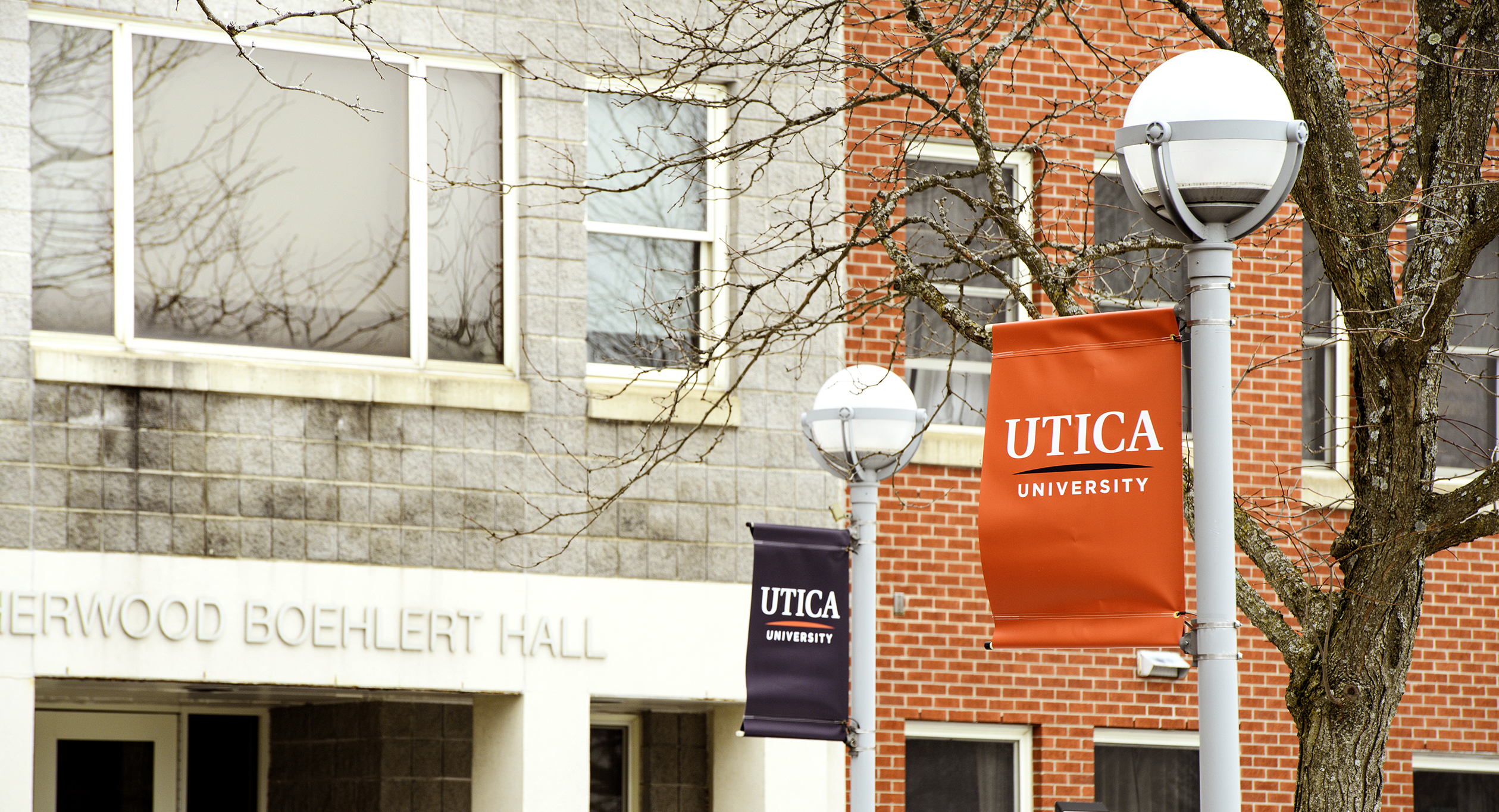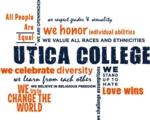History of the Utica College Diversity Committee
The Diversity Committee was established as the “Multicultural Program Committee” in 1990. After a series of incidents at Utica College, other local colleges, and in the Utica community drew attention to the divisions that still existed between members of our community based on race and ethnicity, Utica College spearheaded the first Unity March in 1989.
The initial Unity March was sponsored by the Black Student Union as an expression of racial unity, with the intention of bringing together members of the Utica College community to proactively address issues of race and ethnicity on campus and in our community. Members of local colleges, including SUNY Morrisville, Colgate University, Hamilton College, MVCC, and SUNY Tech participate as well.
One of the outcomes of the many discussions that occurred that year was the establishment of the “Multicultural Program Committee” in 1990. In 1991, the “Program” part of the Committee name was dropped, and it became the Multicultural Committee and an integral part of the governance system at Utica College. The focus of the committee also broadened to include issues of ethnicity, gender, sexual orientation, abilities, etc. The name of the committee was changed to the Diversity Committee in 19xx, and it continues as a College committee with membership that includes faculty, staff, and students across disciplines and offices.
One of the activities most associated with the Multicultural/Diversity Committee was the Unity March. Some information about Utica College Unity Marches follows:
- First Unity March occurred in 1989. This event was a response to incidents that had occurred on several campuses in the area, and was both a protest that such situations continued to occur and an expression of the belief in our ability to live together in harmony.
- Unity Marches initially were called “Candlelight Unity March for Racial Harmony”, and participants marched in the evening from Oneida Square to City Hall.
- In 1991, Unity March was advertised as the “Unity March: A Celebration of Diversity”, but primarily addressed racial and ethnic diversity. By 1992, the focus of the march had broadened, and co-sponsors included not only student organizations such as the Black Student Union and the Latin American Student Union but newly formed groups such as the Womyn’s Resource Center and the Gay and Lesbian Student Alliance.
- Every Unity March included members of local colleges and the community; some came because they were explicitly invited, while others would see the March was occurring and simply join us.
- Other activities that took place at some of the marches included banner contests, marching with candles (or lighting candles at end of march), and guest speakers or presentations before or after the march.
- Eventually the format for Unity Marches evolved into a pre-march rally with speakers, then the march from Oneida Square, a gathering and speak-out after the march and, occasionally, post-march activities (such as a play, panel discussions, etc.). The route for marchers took students, faculty/staff and community members from Oneida Square through the surrounding community and back to Plymouth Bethesda Church for the post-march speak out. The final Unity March in 2003 ended at Pratt Institute as part of a collaborative effort between Pratt and Utica College students.
- Unity Marches became a powerful expression of the belief in the gifts diversity brings to our campus and our communities, but also affirmed the need to talk with each other and understand each other in order to better support each other. You can see those concepts expressed in the eventual banner design that was used for several years, in which the words “Community” and “Unity Through Diversity” encircle the words “Peace and Justice” Include design here
- The Unity March began to lose its relevance as a student-initiated event, and eventually became less representative of a strategy for the campus community to express our belief in the value of cultural diversity. As a result, the Diversity Committee suggested that the campus move towards a Multicultural Retreat in the spring of 2005 in order to bring members of the Utica College community back together to take a look at the ways in which Utica College is diverse, what the climate at Utica College is like in terms of being inclusive and welcoming, and raise issues that still need to be addressed.
The Diversity Committee has been involved in a number of other activities in response to needs of the Utica College campus. Such activities include:
- Peer leadership program (1992) – was intended to develop, implement, and assist in programming related to issues of diversity and multiculturalism on the Utica College Campus. The intention was for this group to serve as a liaison, when their assistance was requested, between students, faculty, and the administration at times of racial or cultural crisis or tension. This program does not currently exist at Utica College.
- Train-the-trainer programming with Hamilton College and Colgate University (1995)
- Funding creative programming focused on cultural diversity (2002-2003)
- Other programs, such as a flag presentation day and a multicultural fair, were initiated by the Diversity Committee and incorporated into regular programming planning by offices such as the International Programs office and Student Activities.
The Three Phase Diversity Initiative Plan
Back in the Spring of 2006, the Diversity Committee proposed a three phase planning initiative in response to a charge from the president to assess the state of diversity on the Utica College campus, part of which will include the writing of a Diversity Initiative Plan. The president’s State of the College Address, which outlined his commitment to maintaining a diverse, welcoming, and inclusive community at Utica College as well as his charge to the Diversity Committee, can be found at http://www.utica.edu/instadvance/marketingcomm/media/statecollege03.pdf.
Phase I: Collection of information
The UC community participated in a series of dialogues, meetings, and round table discussions with student groups, faculty, and staff. The UC community was invited to dialogue related to diversity and the issues surrounding what a Utica College statement on diversity might look like and what strategic planning we might do to support and sustain diversity on campus. In other words: What are the issues related to diversity on campus, and how do we define diversity as a UC community?
Phase II: Writing the statement and action goal planning
During this planning phase, the committee commenced the writing of a formal document that articulated a diversity/multicultural statement and includes perceived areas for action, proposed goals for the Utica College community in general and the Diversity Committee in particular, and strategies for achieving these action items and goals.
Phase III: UC Diversity Plan is written and action goals begin to be implemented
The Initiative Plan is currently being implemented.


